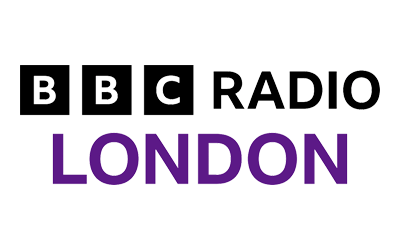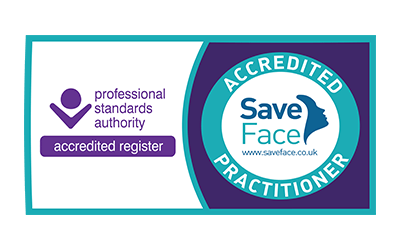Following on from his latest blog on the evolution of facial rejuvenation surgery, leading London plastic surgeon Mr Alex Karidis explains why the deep plane facelift is currently being described as the ‘latest’ facelift even though it’s not a ground-breaking new technique but already part of the arsenal of the experienced plastic surgeon. He also explains why the most critical factor in the success of any surgery is, and always will be, the experience of the surgeon, not the technique or any other marketing hype. Although the importance of addressing the SMAS layer in facial rejuvenation surgery was first highlighted in the 1970s, plastic surgeons devised further techniques that dove deeper into the face, leading to the so-called ‘deeper plane surgeries. Partly, this is because we are a somewhat restless bunch with a constant desire to push boundaries further to address issues not adequately addressed with existing techniques and to try to eke out the last few percentage points of improvement. So, the truth is the ‘cutting-edge’ deep plane facelift is not new at all. It has been around in various forms since the mid-nineties and was called by a variety of names, such as the ‘Composite’, ‘Triplane’, or even ‘Subperiosteal’ facelift (lifting tissues right down to the bone!). Although unquestionably great results using these techniques have most certainly been demonstrated by appropriately skilled and experienced surgeons – this being key here – one of the reasons they have not been as widely adopted is that, by diving deeper into the facial tissues, they expose the patient to increased risk of facial nerve injury, possibly leading to a facial palsy or paralysis. Should the worst happen and injury occur, this would lead to many months of potentially significant problems for the patient. And possibly even permanent damage. I’d imagine this is not something a patient wanting a ‘cosmetic’ procedure would ever wish to bargain for. Of course, the original proponents and authors of these deep plane techniques, some very skilled surgeons, will have us believe the risk is no greater than with other SMAS layer techniques. This may indeed be the case in their highly skilled hands. The problem arises when newer surgeons adopt these techniques without the prerequisite skill to perform them as safely as the original authors. As a patient, how would you know and positively ensure if your surgeon, who has tried to adopt these latest techniques, has the relevant skill set to minimise nerve injury or damage consistently? I think you’d agree it’s not easy. Here, I endeavour to answer some of the most frequently asked questions we get regarding deep plane facelifts and facial rejuvenation surgery as a whole. If I’ve not answered your question, please get in touch to arrange a consultation. People need to understand that the deep plane facelift was devised primarily to deal with the more challenging sagging in the mid-face and nasolabial region (not applicable to everyone, of course!), where some of the traditional SMAS lifting techniques fell short. And, in some instances, this could be helpful. Unfortunately, however, skin sagging is not the only change that can occur in this area. Patients can also experience soft tissue or fat loss, and sometimes even reabsorption of hard bony tissue in the area. Therefore, a more bespoke tailored approach may be required using other methods, such as mid-facelifting or even fat grafting, to enhance the outcome and improve this region without needing a deep plane facelift. Moreover, because the deep plane procedure raises the skin and the SMAS together as a single composite unit, rather than lifting the skin and SMAS separately, it does theoretically maximise blood supply to the skin to maintain good wound healing. However, lifting the skin and SMAS in one unit is not always necessary or even desirable. As each individual has different facial animation characteristics and expressions, different age-related wear and tear characteristics develop in each of us that need to be addressed accordingly. Therefore, it is very beneficial to have the flexibility of adjusting the different layers of skin and SMAS separately in order to address these differences. In some instances, I need to lift the SMAS layer more vertically in one area, whilst lifting more obliquely or even posteriorly in another location without the skin following suit. Having these as separate layers gives me that flexibility and advantage. The deep plane facelift is often less customisable. So, what about the longevity and durability of a deep plane facelift? Well, it’s no different from any other facelift technique, and there is no hard data to support such a claim. And, of course, this would make sense as the single most crucial factor in the longevity of any facelift, all things being equal in that it is performed by a surgeon that is skilled and experienced in facelift surgery, is that it is ultimately dependent on the quality of one’s tissue. The poorer the quality of the tissue, the less any tightening effect lasts, regardless of the technique. Of course not! There isn’t a one-size-fits-all facelift with any technique, and there probably will never be. We are all different; therefore, our anatomy and ageing concerns will always differ. Moreover, tissue characteristics vary in everyone, so it is ridiculous to suggest that one single technique is the answer to everyone’s issues. Here is the bottom line: excellent and natural results can and do arise using many of the SMAS layer techniques or combinations of these, including deep plane facelifts where appropriate, as long as these are done skillfully. And this is key. The technique alone does not guarantee a great result, which applies to ANY technique. It’s the experience, skill, eye, safety record, and assessment of the surgeon, as well as how this works in the hands of the surgeon, that makes ALL the difference! The most critical factor in the success of any surgery is, and always will be, the experience of the surgeon, not the technique or any other marketing hype. I have outlined in previous blog posts how to assess and understand surgery costs and what’s essential. As you will read in this blog, there are many factors that determine the success or not of any facelift procedure. But, for many people, scars matter and are very important. As they should do because that is the tell-tale sign that may indicate you’ve undergone a cosmetic surgery procedure. I have spent many years trying to perfect the insetting and positioning of the patient’s incisions to ensure these are as hidden and well placed as possible and do not compromise their ability to style their hair any way they want without being conscious of their facelift scars. This comes through years of experience and not because of any particular facelift technique. So, once again, one can see that the facelift technique is secondary to many other factors. Where necessary, we always address the deeper structures of the face through various approaches and combinations of techniques. However, I also use my own signature techniques largely according to my patient’s needs and do not follow any specific strict mantra set by other surgeons. Having performed over 1,500 facelifts in the last 25 years, and whilst constantly improving and tweaking these techniques throughout these years, I feel that I can get the best possible outcome, which ensures a natural and youthful look for all our patients. We offer both deep plane facelifts and SMAS facelifts here at Karidis Clinic, get in touch with our team to discuss your options today. If you wish to discuss your ageing concerns or have more facelift questions, call 0207 432 8727 to arrange a consultation with Mr Alex Karidis. 
Surely, these latest deep plane facelifts must be superior to older techniques?
Do the results of a deep plane facelift last longer?
Is the Deep Plane Facelift not the ‘magic, one-size-fits-all facelift to rule all facelifts’ facelift?
What other factors must be considered when deciding who to do my facelift?
Do Karidis Clinic surgeons address the deep plane or deeper structures during a facelift?
Is the deep plane facelift superior to other facelift techniques?
















